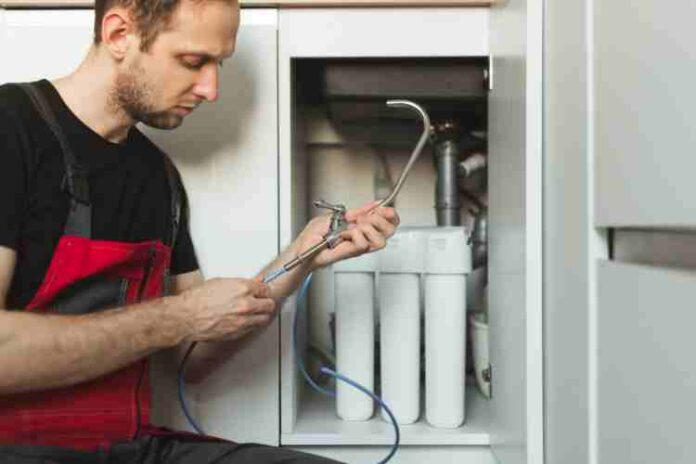Have you ever noticed that your water isn’t as soft and sparkly as it used to be? If so, then you might want to consider investing in a water softener. Water softeners help keep your water clean by removing impurities like calcium and magnesium, which can leave residue on your dishes and clothing.
In this article, we’ll cover the basics of water softeners and how you can install one in your home. Let’s get started!
What is a Water Softener?
A water softener is an appliance that uses ion exchange technology to remove minerals like calcium, magnesium, and other impurities from your water supply. The appliance is typically installed in the home’s main water line and works by replacing those hard minerals with sodium or potassium ions. This process helps keep your water clean, soft, and free of residue.
Why Should You Install a Water Softener?
Installing a water softener in your home will provide you with several advantages. First, it will help keep your plumbing and fixtures free of buildup caused by hard minerals. This can save you money on repairs and replacements down the road.
You’ll also notice a significant difference in the feel and taste of your water after installing a water softener. The softened water won’t leave behind residue on your dishes or clothing, and it will even make it easier to clean with soap and shampoo.
How to Install a Water Softener System
If you’re looking for an easy way to improve the quality of your home’s water, then a Utah water softener system could be the perfect solution. Here’s how you can install one in your home:
- Choose a suitable location for your water softener. It should be close to the main water line and easily accessible for maintenance and repairs if needed. So make sure to choose a spot that’s easy to get to.
- Turn off the main water supply and drain any remaining water in the pipes. Then, disconnect all plumbing lines from the main source and fit the new softener system into place.
- Connect the new system to the main water supply, being sure to use a secure connection. Ensure that all tubing is properly tightened and sealed with tape for extra security.
- Turn the water back on and slowly open each valve one at a time, starting from the softener unit. This will help ensure no air pockets get trapped in the plumbing lines.
- Once you’ve opened all the valves, check for any sudden drops in water pressure or signs of leakage. If everything looks good, you’re ready to enjoy soft, clean water!
With a few simple steps, you can easily maximize the quality of your home’s water by installing a Utah water softener system. All it takes is a bit of time, some elbow grease, and a few supplies to get the job done. Now that you know how to install one in your home, go ahead and enjoy soft water today!
Keeping Your Water Softener Maintained
Once you’ve installed your new water softener system, it’s important to keep it maintained for optimal performance. To do this, you should clean the system’s filters regularly and check for any clogs or blockages. If any are found, be sure to remove them as soon as possible.
Additionally, you must keep an eye on the softener’s brine tank and replace the salt when needed. Generally speaking, most systems will need to be refilled every month or two. Taking the time to keep your system maintained will ensure that it operates efficiently and provides you with clean, soft water for years to come.
By now, you should have a better understanding of what a Utah water softener system is and how you can install one in your home. Installing a water softener can be a great way to maximize the quality of your water and keep your plumbing fixtures free of buildup. So why wait any longer? Go ahead and get started on improving your water today!
